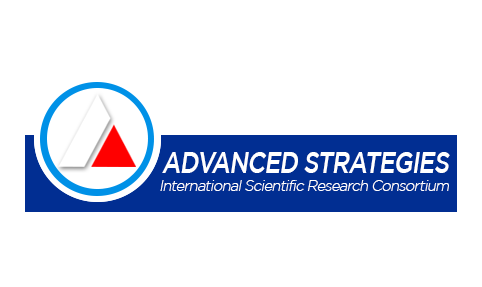
MENU
This training session is designed to identify where your development needs are and to help you to address them. An overview of these core processes is described below,
GENERAL DESCRIPTION OF THE ITEMS
Item 1: Definition, Spectrum and Types of research.
Research has many definitions, but I prefer to define it as an endeavor to study or obtain knowledge through the use of a systematic approach with the intent of clarification. Every research is built around three key features. These are:
From the above definition, it is obvious that the fundamental starting point in writing and publishing academic and scholarly articles is to understand the objectives and the types of research. It is expected that in this module the facilitator will present a clear meaning of research, its objective, and methodology for carrying out the research, research instruments and the guideline for preparing research proposal.
Item 2: Design and development of theoretical and Conceptual framework in research.
The terms “conceptual framework” and “theoretical framework” are often used interchangeably. Conceptual framework can be regarded as the adoption of a set of broad ideas and principles, taken from relevant fields of enquiry and used as a basis for the rational study/explanation of a phenomenon. The conceptual framework is like a ‘road map’ for planning a research study as well as ‘a compass’ for monitoring the direction of the work and conceptualizing the overall goals of the research.
Theoretical framework, on the other hand, can be described as a collection of interrelated concepts, like a theory but not necessarily so well worked –out. It is the use of relevant and existing theories as a platform for investigating and/ or explaining a phenomenon under study. The theoretical framework of a study is really the researcher’s pre – conceived conceptual perspective. It is ‘the lens’ through which the researcher views the world. The researcher’s disciplinary orientation leads to the topics that will be studied and the questions that will be asked. A theoretical framework guides the whole research, determining what things to be measured, and what statistical relationships to look for.
In this module, the facilitator is expected to help the researchers identify and understand the importance of these two frameworks research design and research methodology.
Item 3: Writing a coherent introduction and literature review for academic research.
Writing the introduction and literature review is one of the most difficult aspects of academic research or scholarly writing. Achieving coherence in the introduction and literature review is fundamental since both are crucial aspects that provide focus and depth to the topic under study. The introduction as the name implies, introduces the main problem area, hypotheses or research questions and purpose of research, and these are later expanded in the literature review section.
There are basically two types of introduction in scholarly and academic writing. One is the integrated introduction and the other is separate introduction. Whereas the integrated introduction incorporates literature review, and is used especially in writing journal articles, the separate introduction appears on a separate chapter different from that of the literature review and is mostly used in the writing of theses and dissertations.
The Integrated introduction also differs from the Separate Introduction in that it depends heavily on literature as evidence to provide specific support for the points made; while the separate introduction, on the other hand provides an overview of the important points and trends in the available literature without getting too specific since the details would be presented later in the second chapter.
In all, most researchers agree that the following features should be crucial in determining the criteria for a good introduction in scholarly writing:
In reviewing literature, it is important to note that citing of and giving credit to earlier works add value. It is perceived as part of the researcher’s scientific and scholarly responsibility that is required for the development of the body of science. This does not imply the inclusion of an exhaustive historical review of literature since the readers of scholarly writing are assumed to be somewhat familiar and knowledgeable about the subject matter.
The following key points must be reflected in a good literature review. These are:
The facilitator for this module is expected to do further work on this and prepare a good presentation.
Item 4: Systematic collection of data and statistical data analysis
Data are the symbols, numbers and /or alphabetical characters used to describe one or more attributes such as age, sex, volume, growth rates, temperature, etc. of an entity. Data are obtained by observing, counting, measuring, weighing etc which are then recorded. Data is the building block of information. Data can be of three types:
There are three basic techniques available to collect research data. These are interview (both face to face and via questionnaires), observation and examination of existing records.
Analysis of data generally require that the investigator must systematically examine data in order to understand patterns and, in some cases, to identify cause and effect relationships between dependent and independent variables. This process must be well documented so that other researchers can follow it, understand it, understand the decisions already taken and independently verify the results.
The facilitator is expected to expand this content, discuss the importance and method of research design and the various ways data can be collected in an acceptable manner.
Statistics is a vital tool in any research. Its use starts from the point of gathering data, through data analysis to the point of making the final decisions or inferences. The facilitator is expected to discuss these different stages in the use of statistics in research methods and the ultimate objective is to optimize the gains of statistical analysis. These gains, the facilitator are expected to teach will come about through minimization of errors, correct method of data analysis and reasonable interpretations of results.
Item 5: Use of computers and the internet for research purpose.
The internet is a very useful tool for research and it is free for all. It aids access to information loading and retrieval. Unlike printed scholarly journals and books, web materials may or may not be refereed or reviewed. Getting quality web materials could also be very tasking.
In this module, the facilitator is expected to focus on how to use the internet for research purpose. For this purpose, the facilitator should educate its audience about the resources available for research on the internet.
Item 6: Referencing styles
Referencing styles or manual of styles is a compilation of a set of rules for scholarly publications. There are different types of styles. Each style has its peculiarities with differences in amount of details, referencing and other editorial details.
In this presentation, the facilitator is expected to teach the referencing styles and other editorial policies of the institute.
Item 7: Ethics in Research
Ethics connotes what is morally right and what is not. According to Cambridge International Dictionary, ethics has to do with or relates to moral action and conduct i.e. what is professionally right. It is about conforming to professional standards. Thus Ethics means the best of practice. Ethics in research therefore means the best practice required in any research effort.
A research study may achieve one of the following objectives: breaking new grounds, further breakthroughs thus advancing knowledge beyond an existing breakthrough and re – emphasizing or re – assertion of an existing breakthrough. The utility of the third objective lies in the justification or acceptance of an existing conclusion in respect of the earlier breakthrough. Also, it is essential to note that certain characteristics are common to all research efforts.
These characteristics include;
In the process of carrying out a research study, the researcher is permitted, indeed expected to consult existing literature on the subject – matter of the research. The sources of consultation, the existing literature or research effort must however be stated clearly. The underlying reason for this is that an existing research effort or literature review may ginger up further thought and may ultimately produce further breakthroughs.
It is also permitted to consult existing literature in order to give validity to one’s effort. The researcher is permitted to do this as long as it is within the permissive extent of the law.
The facilitator for this module is expected to expound this further and teach different ways of sighting existing literature in a new work being done.
Item 8: Writing a Scholarly and academic paper
This is the wrap up session, were all the ideas are put together and used to explain the different parts of an academic paper. The facilitator is expected to explain the different parts of the journal paper namely:

